�
Analyzing Data with Microsoft Power BI and Power Pivot for
Excel
Alberto Ferrari and Marco Russo
PUBLISHED BY
Microsoft Press
A division of Microsoft Corporation
One Microsoft Way
Redmond, Washington 98052-6399
Copyright © 2017 by Alberto Ferrari and Marco Russo.
All rights reserved. No part of the contents of this book may be reproduced or transmitted in any form or by any means without the written
permission of the publisher.
Library of Congress Control Number: 2016931116
ISBN: 978-1-5093-0276-5
Printed and bound in the United States of America.
First Printing
Microsoft Press books are available through booksellers and distributors worldwide. If you need support related to this book, email Microsoft
Press Support at mspinput@microsoft.com . Please tell us what you think of this book at https://aka.ms/tellpress .
This book is provided “as-is” and expresses the author’s views and opinions. The views, opinions and information expressed in this book,
including URL and other Internet website references, may change without notice.
Some examples depicted herein are provided for illustration only and are fictitious. No real association or connection is intended or should be
inferred.
Microsoft and the trademarks listed at https://www.microsoft.com on the “Trademarks” webpage are trademarks of the Microsoft group of
companies. All other marks are property of their respective owners.
Acquisitions Editor: Devon Musgrave
Editorial Production: Polymath Publishing
Technical Reviewer: Ed Price
Copy Editor: Kate Shoup
Layout Services: Shawn Morningstar
Indexing Services: Kelly Talbot Editing Services
Proofreading Services: Corina Lebegioara
Cover: Twist Creative • Seattle
�
Contents at a glance
Introduction
Chapter 1 Introduction to data modeling
Chapter 2 Using header/detail tables
Chapter 3 Using multiple fact tables
Chapter 4 Working with date and time
Chapter 5 Tracking historical attributes
Chapter 6 Using snapshots
Chapter 7 Analyzing date and time intervals
Chapter 8 Many-to-many relationships
Chapter 9 Working with different granularity
Chapter 10 Segmentation data models
Chapter 11 Working with multiple currencies
Appendix A Data modeling 101
Index
�
Contents
Introduction
Who this book is for
Assumptions about you
Organization of this book
Conventions
About the companion content
Acknowledgments
Errata and book support
We want to hear from you
Stay in touch
Chapter 1. Introduction to data modeling
Working with a single table
Introducing the data model
Introducing star schemas
Understanding the importance of naming objects
Conclusions
Chapter 2. Using header/detail tables
Introducing header/detail
Aggregating values from the header
Flattening header/detail
Conclusions
Chapter 3. Using multiple fact tables
Using denormalized fact tables
Filtering across dimensions
Understanding model ambiguity
Using orders and invoices
Calculating the total invoiced for the customer
Calculating the number of invoices that include the given order of the given customer
Calculating the amount of the order, if invoiced
Conclusions
Chapter 4. Working with date and time
Creating a date dimension
Understanding automatic time dimensions
Automatic time grouping in Excel
Automatic time grouping in Power BI Desktop
Using multiple date dimensions
Handling date and time
Time-intelligence calculations
Handling fiscal calendars
Computing with working days
Working days in a single country or region
Working with multiple countries or regions
Handling special periods of the year
Using non-overlapping periods
Periods relative to today
Using overlapping periods
Working with weekly calendars
�
Conclusions
Chapter 5. Tracking historical attributes
Introducing slowly changing dimensions
Using slowly changing dimensions
Loading slowly changing dimensions
Fixing granularity in the dimension
Fixing granularity in the fact table
Rapidly changing dimensions
Choosing the right modeling technique
Conclusions
Chapter 6. Using snapshots
Using data that you cannot aggregate over time
Aggregating snapshots
Understanding derived snapshots
Understanding the transition matrix
Conclusions
Chapter 7. Analyzing date and time intervals
Introduction to temporal data
Aggregating with simple intervals
Intervals crossing dates
Modeling working shifts and time shifting
Analyzing active events
Mixing different durations
Conclusions
Chapter 8. Many-to-many relationships
Introducing many-to-many relationships
Understanding the bidirectional pattern
Understanding non-additivity
Cascading many-to-many
Temporal many-to-many
Reallocating factors and percentages
Materializing many-to-many
Using the fact tables as a bridge
Performance considerations
Conclusions
Chapter 9. Working with different granularity
Introduction to granularity
Relationships at different granularity
Analyzing budget data
Using DAX code to move filters
Filtering through relationships
Hiding values at the wrong granularity
Allocating values at a higher granularity
Conclusions
Chapter 10. Segmentation data models
Computing multiple-column relationships
Computing static segmentation
Using dynamic segmentation
Understanding the power of calculated columns: ABC analysis
�
Conclusions
Chapter 11. Working with multiple currencies
Understanding different scenarios
Multiple source currencies, single reporting currency
Single source currency, multiple reporting currencies
Multiple source currencies, multiple reporting currencies
Conclusions
Appendix A. Data modeling 101
Tables
Data types
Relationships
Filtering and cross-filtering
Different types of models
Star schema
Snowflake schema
Models with bridge tables
Measures and additivity
Additive measures
Non-additive measures
Semi-additive measures
Index
�
Introduction
Excel users love numbers. Or maybe it’s that people who love numbers love Excel. Either way, if you are interested in gathering insights from any
kind of dataset, it is extremely likely that you have spent a lot of your time playing with Excel, pivot tables, and formulas.
In 2015, Power BI was released. These days, it is fair to say that people who love numbers love both Power Pivot for Excel and Power BI.
Both these tools share a lot of features, namely the VertiPaq database engine and the DAX language, inherited from SQL Server Analysis
Services.
With previous versions of Excel, gathering insights from numbers was mainly a matter of loading some datasets and then starting to calculate
columns and write formulas to design charts. Yes, there were some limitations: the size of the workbook mattered, and the Excel formula
language was not the best option for huge number crunching. The new engine in Power BI and Power Pivot is a giant leap forward. Now you
have the full power of a database and a gorgeous language (DAX) to leverage. But, hey, with greater power comes greater responsibility! If you
want to really take advantage of this new tool, you need to learn more. Namely, you need to learn the basics of data modeling.
Data modeling is not rocket science. It is a basic skill that anybody interested in gathering insights from data should master. Moreover, if you
like numbers, then you will love data modeling, too. So, not only is it an easy skill to acquire, it is also incredibly fun.
This book aims to teach you the basic concepts of data modeling through practical examples that you are likely to encounter in your daily life.
We did not want to write a complex book on data modeling, explaining in detail the many complex decisions that you will need to make to build
a complex solution. Instead, we focused on examples coming from our daily job as consultants. Whenever a customer asked us to help solve a
problem, if we felt the issue is something common, we stored it in a bin. Then, we opened that bin and provided a solution to each of these
examples, organizing them in a way that it also serves as a training on data modeling.
When you reach the end of the book, you will not be a data-modeling guru, but you will have acquired a greater sensibility on the topic. If, at
that time, you look at your database, trying to figure out how to compute the value you need, and you start to think that—maybe—changing the
model might help, then we will have accomplished our goal with this book. Moreover, you will be on your path to becoming a successful data
modeler. This last step—that is, becoming a great data modeler—will only come with experience and after many failures. Unfortunately,
experience is not something you can learn in a book.
Who this book is for
This book has a very wide target of different kind of people. You might be an Excel user who uses Power Pivot for Excel, or you may be a data
scientist using Power BI. Or you could be starting your career as a business-intelligence professional and you want to read an introduction to the
topics of data modeling. In all these scenarios, this is the book for you.
Note that we did not include in this list people who want to read a book about data modeling. In fact, we wrote the book thinking that our
readers probably do not even know they need data modeling at all. Our goal is to make you understand that you need to learn data modeling
and then give you some insights into the basics of this beautiful science. Thus, in a sentence if you are curious about what data modeling is and
why it is a useful skill, then this is the book for you.
Assumptions about you
We expect our reader to have a basic knowledge of Excel Pivot Tables and/or to have used Power BI as a reporting and modelling tool. Some
experience in analysis of numbers is also very welcome. In the book, we do not cover any aspect of the user interface of either Excel or Power
BI. Instead, we focus only on data models, how to build them, and how to modify them, so that the code becomes easier to write. Thus, we
cover “what you need to do” and we leave the “how to do it” entirely to you. We did not want to write a step-by-step book. We wanted to
write a book that teaches complex topics in an easy way.
One topic that we intentionally do not cover in the book is the DAX language. It would have been impossible to treat data modeling and
DAX in the same book. If you are already familiar with the language, then you will benefit from reading the many pieces of DAX spread
throughout this book. If, on the other hand, you still need to learn DAX, then read The Definitive Guide to DAX , which is the most
comprehensive guide to the DAX language and ties in well with the topics in this book.
Organization of this book
The book starts with a couple of easy, introductory chapters followed by a set of monographic chapters, each one covering some specific kind
of data model. Here is a brief description of each chapter:
Chapter 1 , “Introduction to data modeling ,” is a brief introduction to the basic concepts of data modeling. Here we introduce what data
modeling is, we start speaking about granularity, and we define the basic models of a data warehouse—that is, star schemas, snowflakes,
normalization, and denormalization.
Chapter 2 , “Using header/detail tables ,” covers a very common scenario: that of header/detail tables. Here you will find discussions and
solutions for scenarios where you have, for example, orders and lines of orders in two separate fact tables.
Chapter 3 , “Using multiple fact tables ,” describes scenarios where you have multiple fact tables and you need to build a report that
mixes them. Here we stress the relevance of creating a correct dimensional model to be able to browse data the right way.
Chapter 4 , “Working with date and time ,” is one of the longest of the book. It covers time intelligence calculations. We explain how to
build a proper date table and how to compute basic time intelligence (YTD, QTA, PARALLELPERIOD, and so on), and then we show
several examples of working day calculations, handling special periods of the year, and working correctly with dates in general.
Chapter 5 , “Tracking historical attributes ,” describes the use of slowly changing >dimensions in your model. This chapter provides a
�
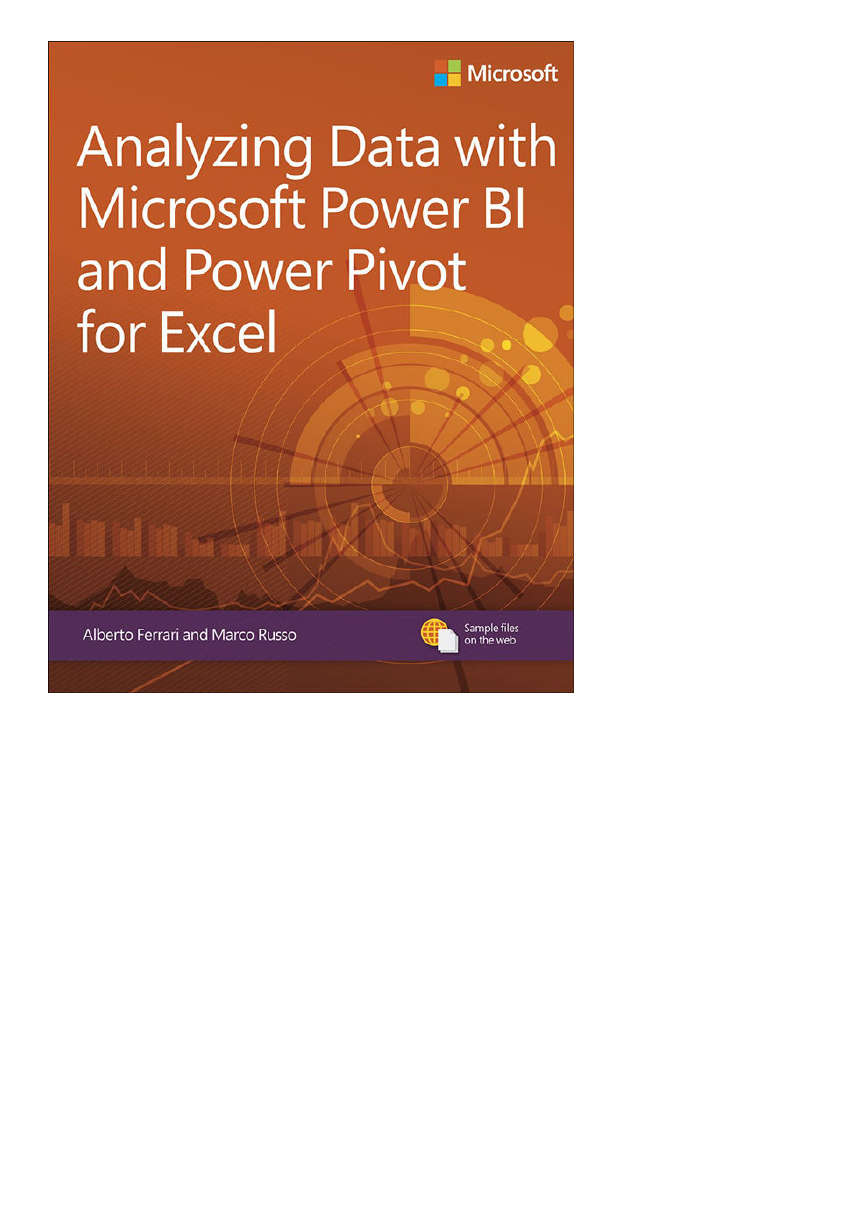

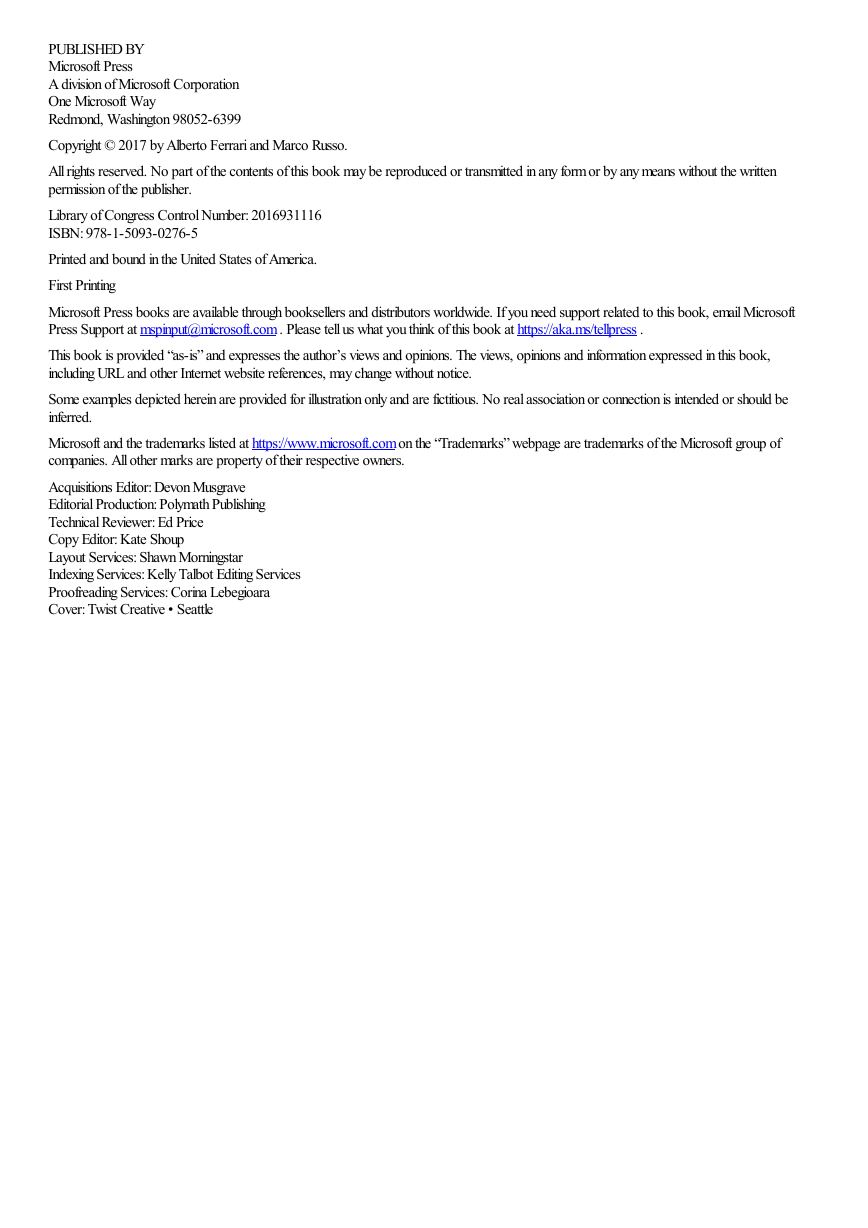
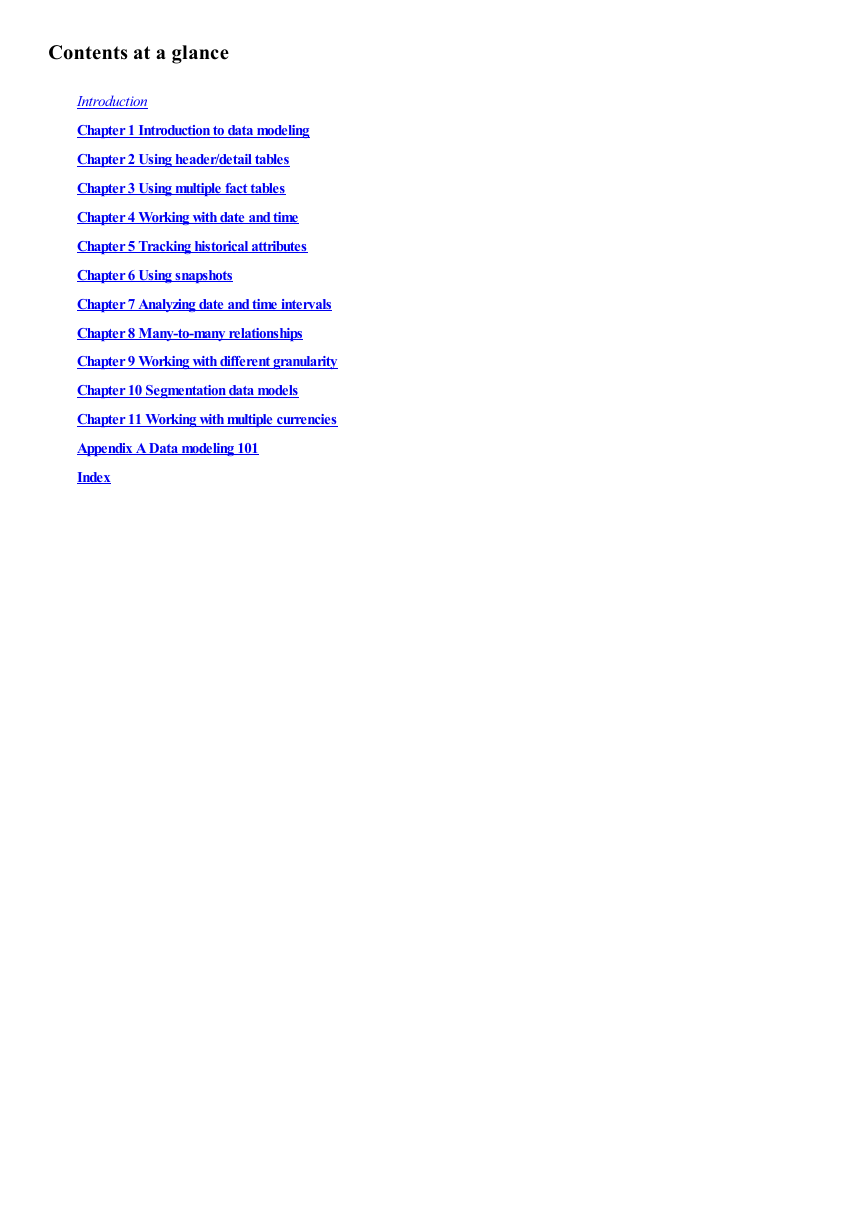
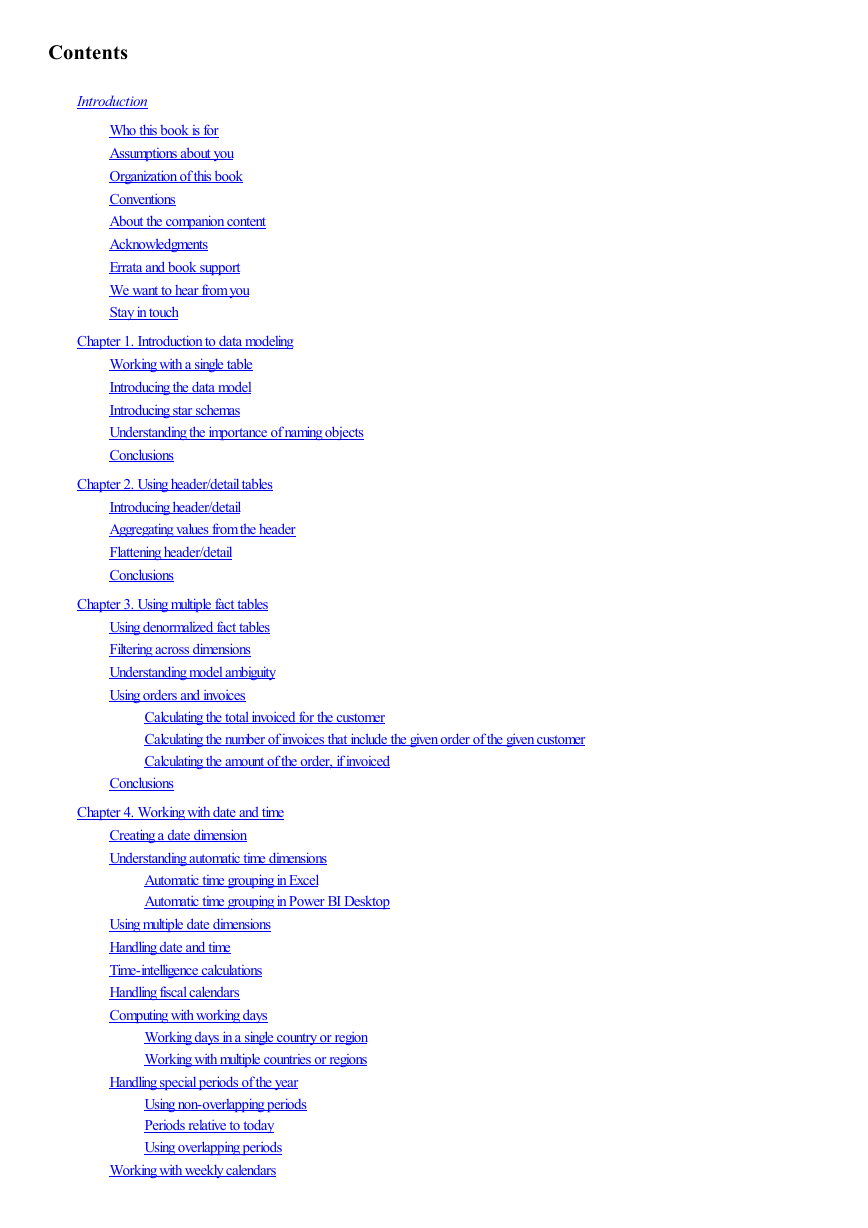
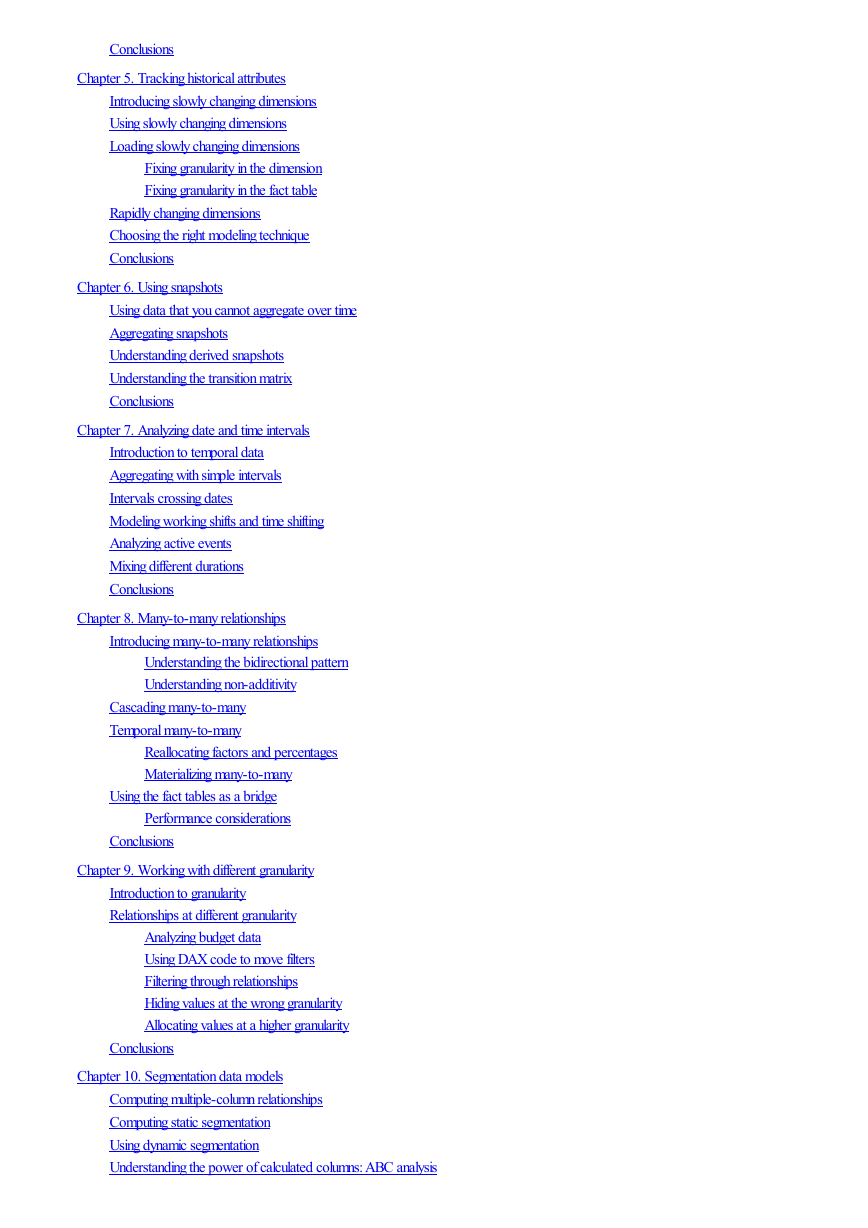
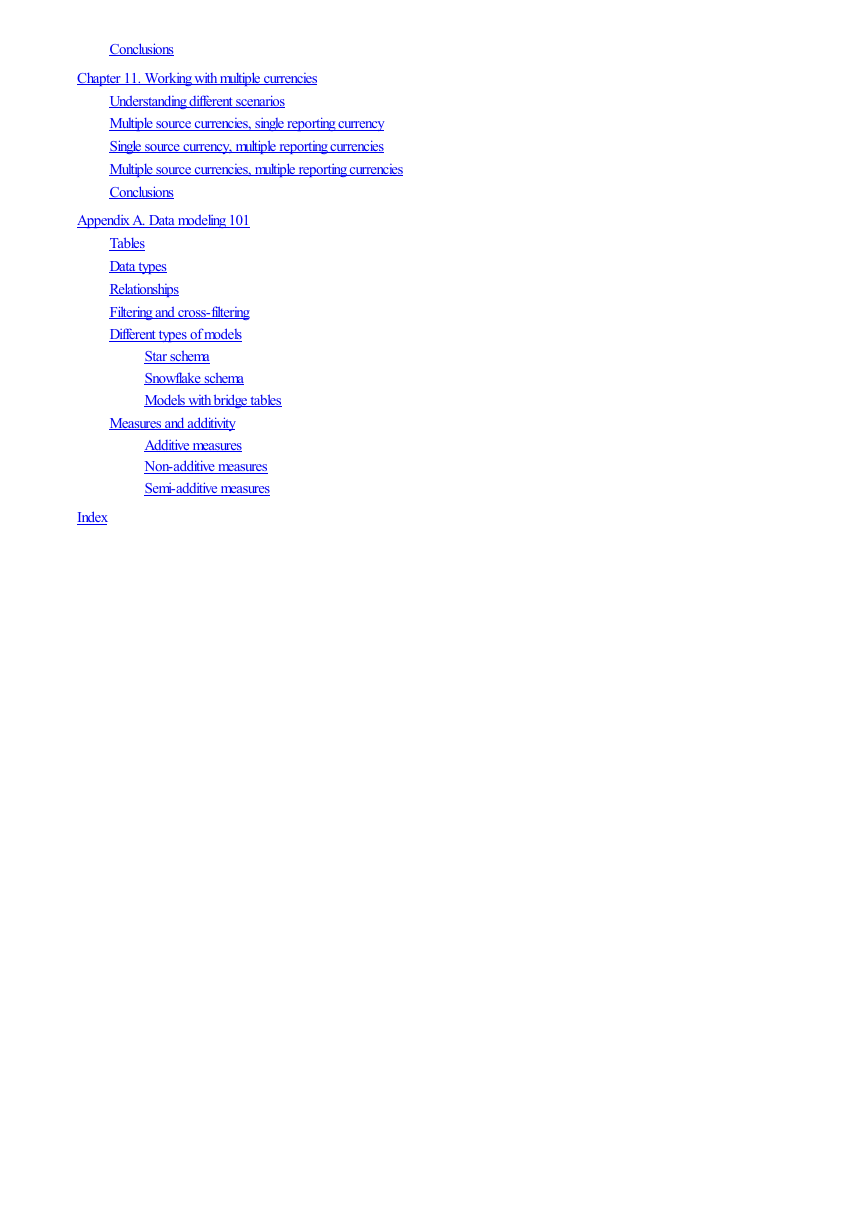
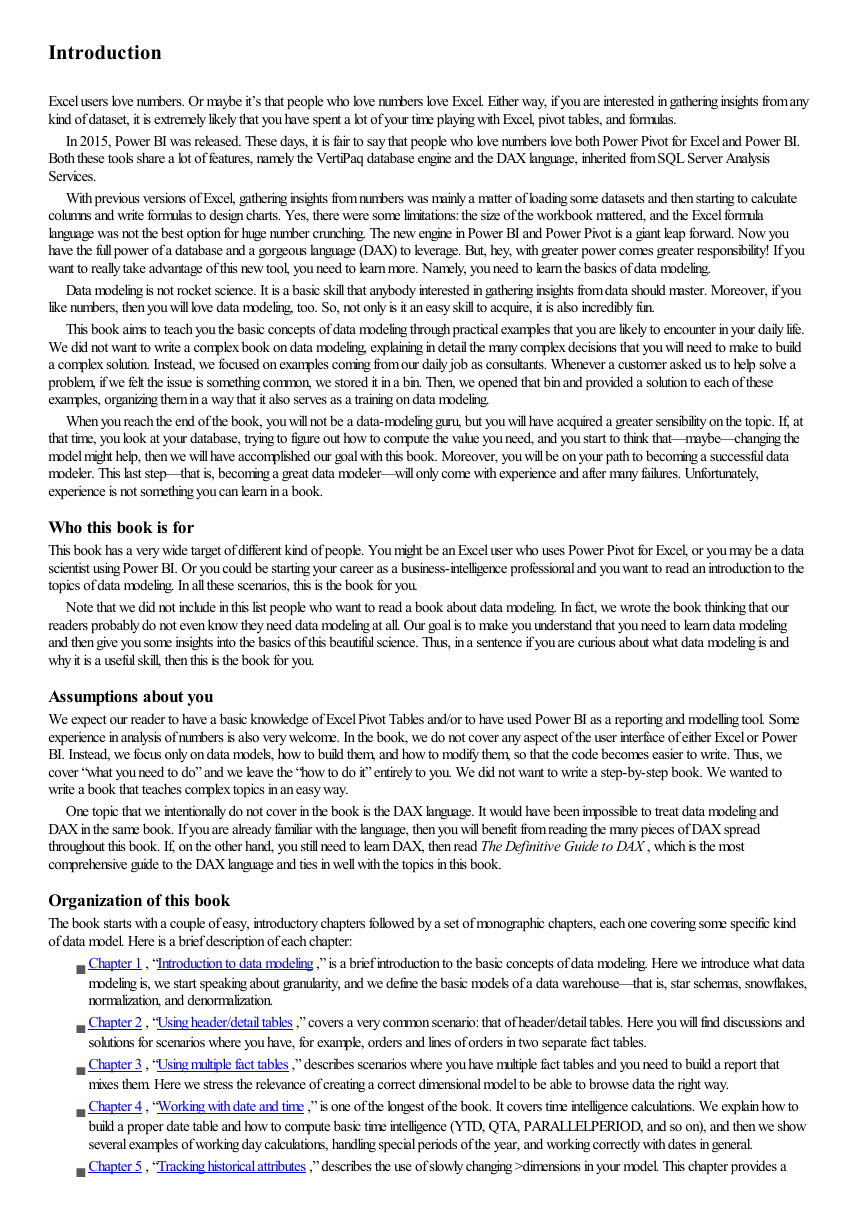








 2023年江西萍乡中考道德与法治真题及答案.doc
2023年江西萍乡中考道德与法治真题及答案.doc 2012年重庆南川中考生物真题及答案.doc
2012年重庆南川中考生物真题及答案.doc 2013年江西师范大学地理学综合及文艺理论基础考研真题.doc
2013年江西师范大学地理学综合及文艺理论基础考研真题.doc 2020年四川甘孜小升初语文真题及答案I卷.doc
2020年四川甘孜小升初语文真题及答案I卷.doc 2020年注册岩土工程师专业基础考试真题及答案.doc
2020年注册岩土工程师专业基础考试真题及答案.doc 2023-2024学年福建省厦门市九年级上学期数学月考试题及答案.doc
2023-2024学年福建省厦门市九年级上学期数学月考试题及答案.doc 2021-2022学年辽宁省沈阳市大东区九年级上学期语文期末试题及答案.doc
2021-2022学年辽宁省沈阳市大东区九年级上学期语文期末试题及答案.doc 2022-2023学年北京东城区初三第一学期物理期末试卷及答案.doc
2022-2023学年北京东城区初三第一学期物理期末试卷及答案.doc 2018上半年江西教师资格初中地理学科知识与教学能力真题及答案.doc
2018上半年江西教师资格初中地理学科知识与教学能力真题及答案.doc 2012年河北国家公务员申论考试真题及答案-省级.doc
2012年河北国家公务员申论考试真题及答案-省级.doc 2020-2021学年江苏省扬州市江都区邵樊片九年级上学期数学第一次质量检测试题及答案.doc
2020-2021学年江苏省扬州市江都区邵樊片九年级上学期数学第一次质量检测试题及答案.doc 2022下半年黑龙江教师资格证中学综合素质真题及答案.doc
2022下半年黑龙江教师资格证中学综合素质真题及答案.doc